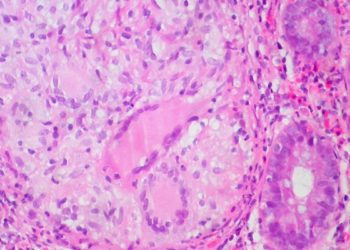Rapid respiratory pathogen testing does not significantly alter antibiotic prescription rates among children with acute respiratory illness
1. When treating children with an acute respiratory illness in the emergency department, no significant difference in antibiotic prescription rates was observed when clinicians knew rapid respiratory pathogen test results, compared to when clinicians did not.
2. Children with an acute respiratory illness whose clinician knew rapid respiratory pathogen test results had longer emergency department length of stay, an increased rate of antiviral prescriptions, and a higher chance of being admitted to hospital.
Evidence Rating Level: 1 (Excellent)
Study Rundown: Increased and inappropriate antibiotic prescribing practices have been a major global health concern in recent years due to an increasing prevalence of antibiotic-resistant pathogens. In an effort to help clinicians make more appropriate antibiotic prescribing decisions, enhanced rapid pathogen testing systems are being developed to identify causative pathogens in patients. This randomized clinical trial was done to investigate if the use of rapid respiratory pathogen (RRP) testing would decrease antibiotic prescription rates in children presenting with an acute respiratory illness in the emergency department. The study consisted of 907 children divided into two groups consisting of 340 children under the care of clinicians given RRP results, and 567 children under the care of clinicians without RRP results. No significant differences between children demographic factors were identified, including primary insurance status, season of enrollment, sex, race/ethnicity, high-risk medical conditions, and influenza vaccination status. Following respiratory illness care and statistical analysis adjusting for confounding variables, the rates of antibiotic prescriptions between the two groups were not significantly different from each other. Clinicians having access to children RRP results did, however, have significantly higher antiviral prescription rates, higher percentage of children being admitted into hospital, and increased emergency department length of stay following statistical adjustment. The reasons for these findings are unknown to the authors of this study and have occurred in previous randomized clinical trials. It is speculated to possibly be due to the fact that clinicians may prescribe antibiotics or antivirals before receiving RRP results. This study attempted to avoid this however, as research staff approached children and families before clinical evaluation, which strengthens this study’s results.
Click to read the study in JAMA Network Open
Relevant Reading: Clinical Impact of RT-PCR for Pediatric Acute Respiratory Infections: A Controlled Clinical Trial
In-Depth [randomized controlled trial]: This single-center randomized controlled trial was done in the emergency departments of the Children’s Hospital Colorado health system to determine if rapid respiratory pathogen testing influenced clinicians’ decision to prescribe antibiotics in children with acute respiratory illness. The trial randomized 907 children with a median age of 2.1 years (1 month-18 years) into two groups, of which 340 children (37.5%) were under the care of clinicians who were given RRP results and 567 children (62.5%) under the care of clinicians without RRP results. Demographic characteristics were compared between groups to control for additional factors potentially influencing care including primary insurance status, season of enrollment, sex, race/ethnicity, high-risk medical conditions, and influenza vaccination status. Following statistical comparison, the two groups’ populations were not significantly different amongst these characteristics. The group of children whose clinicians were given RRP results did however have a higher prevalence of bacterial infections, which needed to be adjusted for in the statistical analyses. The majority of acute respiratory illnesses were caused by viral pathogens, with the most common viruses including enterovirus/rhinovirus (n=295), influenza (n=180), syncytial virus (n=162), and adenovirus (n=115). After statistical adjustment, the rates of antibiotic prescriptions between groups were not significantly different (relative risk score = 1.1, 95% Confidence Interval [CI], 0.9-1.4). Children whose clinicians have RRP results had significantly higher rates of antiviral prescriptions (relative risk score= 2.6, 95% CI, 1.6-4.5), higher admission rates into hospital’ (relative risk score= 1.8, 95% CI, 1.4-2.5), and longer stays in the emergency department (relative risk score= 1.6, 95% CI, 1.5-1.7).
Image: PD
©2021 2 Minute Medicine, Inc. All rights reserved. No works may be reproduced without expressed written consent from 2 Minute Medicine, Inc. Inquire about licensing here. No article should be construed as medical advice and is not intended as such by the authors or by 2 Minute Medicine, Inc.






